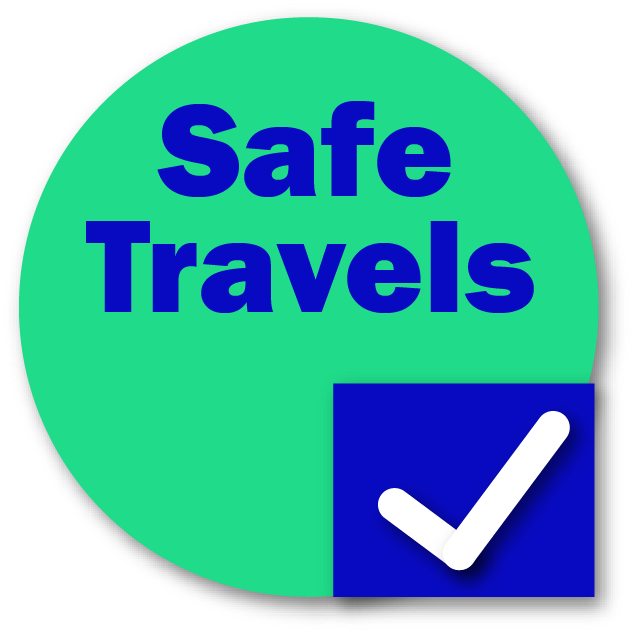



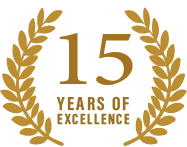
 trip overview
included
trip highlights
activities
accommodations
itinerary
packing list
faq
essential trip information
best season to travel
price & availability
Reserve Online
trip overview
included
trip highlights
activities
accommodations
itinerary
packing list
faq
essential trip information
best season to travel
price & availability
Reserve Online
 CREATING AUTHENTIC TOURS IN PERU
CREATING AUTHENTIC TOURS IN PERU

The Ancascocha Trek, also known as the Hidden Inca Trail or the Super Inca Trail, is a strenuous and less traveled trek. If you’re looking for off the beaten path trails, pristine wilderness, and a challenging trek, this is the one for you! National Geographic recently named Ancascocha Trail as one of the World’s 20 Best Hikes.
On Ancascocha trek to Machu Picchu, the trail goes through very remote Andean communities, where locals try to keep living in happiness moving their llamas and alpacas as they’ve been doing so far. This trail forms part of the network of classic Inca Trail which is linking Machu Picchu from the other towns located in the highlands, therefore, we’ll have the chance to witness ancient Incan ruins along the path to Machu Picchu, Inca ruins that are still covered by shrubs waiting for becoming uncovered by you.
Ancascocha Trail is very strenuous and challenging due to the altitude gain, high altitudes, 7 steep summits, and length of hiking: 56 km/34.8 miles and goes up to4,959m/16,270ft. Being rewarded with amazing views does not come without effort, we recommend that everyone who joins us has a good level of basic fitness. Be prepared for all kinds of weather changes, since in the Andes, you can rain, snow, or hail at any time. That is why we recommend wearing a good trekking equipment such as hiking shoes, jackets and pants.
Ancascocha Trail Camping Tents: 02 nights
The overnight stays during the Ancascocha Trail are made in double-roofed tents, which are installed by the accompanying team. The tents are equipped with thick foam mattresses that are carried by the horses. On your ancascocha trek you will have a tent with your portable toilet, in the camps, these are always clean and you can use at any time. A dining tent offers enough space to eat together and end the evening in peace.
RETAMA MACHU PICCHU: 1 night
The Hotel Hotel Retama Machupicchu is located, 700 meters from the hot springs of Machu Picchu, it is the most beautiful and quiet area of the town, in the Wiñaywayna Park located three blocks from the Peru Rail station, overlooking the river and the moutains; It offers free WiFi and a tour desk. The accommodation offers luggage storage and a currency exchange service. Room service, 45-inch plasma AOC TV, 24-hour hot water, Hair dryer, Towels for thermal baths, Buffet breakfast.
Our guides will pick you up from your hotel at 5:30 AM to take you on a private car ride to Soqma (3,205 m/10,512 ft), the starting point of our four-day trek. Upon meeting up with the rest of our staff, our horsemen and porters we will embark on our trekking adventure toward our destination for the day which is the Valley of Chancachuco.
An hour and a half from the starting point we will arrive at the Perolniyoc waterfalls’ lookout followed by a visit to an ancient Incan site. At every point of interest, our professional and knowledgeable guides will give you small bits of information about the background of these locations. From there we will continue the ascend along a gorgeous valley toward our lunch spot at Rayan. After Lunch, we will go on a challenging climb to reach the highest point of the day at the Kuychiccasa pass (4,450 m /14,599 ft). On this location, the impressive views of the Sacred Valley on one side and the Chancachuco Valley, on the other hand, will be the prelude of the majestic scenery of this trek for the days to come. We complete our day by going down the hill for about an hour toward our campsite at Chancachucho.
Overnight camp in the village of Rayan (3,700 meters / 12.136 feet).
Accommodation: Comfortable Camping Tents
Included Activities:
Meals Included: Lunch, Dinner
You will be woken with a cup of freshly brewed coffee or tea, followed by a full breakfast to fuel you for the morning ahead. We begin with a 45 minute undulating hike followed by a 20 minute ascent by way of a narrow trail that follows a stream with beautiful views of Mt. Veronica (5,822 m/ 19,100 ft). We then take a 2.5 hour walk downhill to reach the small community of Ancascocha (3,700 m/12,139 ft), in a small but gorgeous wooded valley with a stream running through it. Continuing uphill for 1 hour you will enjoy views of the nearby glacier and well preserved Inca remains, before reaching the beautiful crystal blue Ancascocha Lake where we stop for lunch.
After lunch we continue our ascent towards the Huayanay Pass (4,650 m/15,255 ft). This is a strenuous 2 hour climb along a steep switchback trail which brings us to the highest point of our trek. Along this section you will see an original cobblestone paved Inca Trail. After taking time to enjoy the incredible views from the summit, we embark on a 3 hour descent into greener vegetation. Along this stretch we will have a distant vista of the classic Inca trail to Machu Picchu as well as fascinating views of the communities of the Quesqa valley. We will also pass the small Inca site of Incaracay. Finally we will reach our campsite, nestled in the Quesqa valley (3,850 m/12,631 ft). Once again, your chef will serve an excellent dinner as we reflect on the sights and sounds of the day.
Accommodation: Comfortable Camping Tents
Included Activities:
Meals Included: Breakfast, Lunch, Dinner
After the breakfast we will hike downhill for 2 hours towards Paucarcancha ruins, there you will explore this fascinating inca place. Then we will continue hike down to the community of Huayllabamba, where we will join to the classical inca trail. At midday we will arrive to the place of tarayoc, where will be our Lunch. After one short break we have to walk to the inca site of Patallacta, which is the most amazing and biggest one inca village. Continuing with the walk alongside the Vilcanota river, we will arrive at km 82, where we say goodbye to our muleteers; and then take the transportation to Ollantaytambo.
In the afternoon (16:45 pm) we will take the train to Aguas Calientes, on arrival we will check in the hotel. Then with the guide , you will organize the plan to visit Machu Picchu.
Accommodation: Hotel in Aguas Calientes
Included Activities:
Meals Included: Breakfast, Lunch
This day the tour in Machu Picchu will take place early in the morning, after getting ready at the hotel, we will take the bus at 5:30 am. After a trip along the road surrounded by vegetation and impressive views of the Putukusi mountain, we will arrive at the access point for the sacred sanctuary of Machu Picchu.
First, before passing the control, those who wish to use the toilets will be able to do so. Since there are no bathrooms inside Machu Picchu, if you are going to go outside once inside, unfortunately you will not be able to re-enter.
Our visit to the wonder of Machu Picchu will be through circuit number 2, since it is one of the most complete. On this tour you will be able to go up to the famous guardian’s house from where the postcard photo of Machu Picchu will be taken, then you will pass through the main gate, the ceremonial plaza, the Inca’s house, the ceremonial fountains, you will see the temple of the sun, but not up close; You can also access the pyramid where the sundial is located.
Continuing with the circuit you will arrive at the sector of the sacred rock, and finally you will visit the urban area where the royal houses of the Inca nobles were, and also the room of mirrors. After 3 hours of travel we will retire with our guide, and once outside you can have a drink or food. Because inside the complex is prohibited.
Then you can take the bus down to the town of Aguas Calientes, where you will have enough time to have your lunch. At 2:30 p.m. it will be the time of the return train to the Ollantaytambo station, where your return transportation to Cusco awaits you, arriving at approximately 7:00 p.m.
Included Activities:
Meals Included: Breakfast
When packing for your Ancascocha Trail to machu picchu , you should keep in mind that it is best to dress in layers due to the weather variation. The variety of clothes that you must pack to dress in layers is key to your walk, from the morning when it is quite cold until mid afternoon when the temperatures rise and reach their peak and then freeze again at night. Stratification is also useful as you ascend high passages that are exposed to winds or descend into shady valleys.
Effective stratification only works if each layer allows moisture to pass and escape into the external environment. In fact, the best layered clothing, such as wool, promotes moisture transfer through its absorbent properties. Cotton and denim absorb moisture and, therefore, should be avoided.
 warm jackets
warm jackets
 Hydration bladder
Hydration bladder
 wool socks
wool socks
 camera
camera
 scarf
scarf
 first aid kit
first aid kit
 hiking shoes
hiking shoes
 Dry bags
Dry bags
 Trekking Poles
Trekking Poles
 sun cream
sun cream
 Snack
Snack
 sun hat
sun hat
 bathing suite
bathing suite
 rain coat
rain coat
 Sandals
Sandals
 insect repellent
insect repellent
 Passport
Passport
 Down Jackets
Down Jackets
 toilet paper
toilet paper
 daypack
daypack
 Wool cap
Wool cap
 head lamp
head lamp
 gloves
gloves
 sun glasses
sun glasses
 cap
cap
 extra cash
extra cash
 Trekking pants
Trekking pants
The Ancascocha Trail to Machu Picchu provides trekkers with a fantastic opportunity to hike the Andean mountains while learning the history of the pre columbian people inhabiting what is now called South America and their encounter with the Spaniards ‘conquistadors’.
In this piece, you will find absolutely everything you need to know about the ancient incas trail, which is the most beautiful hiking destination of Peru and South America.
The Ancascocha Trail starts from the Soqma Peasant Community in the direction of the Ancascocha Lagoon. Then we continue to kilometer 82 and finally reach Machu Picchu, all these places to visit are located within the geographical scope of the province of Urubamba, department of Cusco.
The Ancascocha trail presents a uniqueness of different ecological floors with their respective heights that go from the departure of the city of Cusco, the beginning of the walk in the community of Soqma, walking through the Andes mountain range, descending until arriving at kilometer 82 and finally go to Machu Picchu.
The weather during the Ancascocha Trail to Machu Picchu is characterized by being dry temperate with a maximum temperature of 25 ° C and a minimum temperature of up to -8 ° C (during the months of June, July and August) that can eventually occur during the overnight night. in the second camp located in Ancascocha.
From Paucarcancha the weather will be much more pleasant and condescending with visitors. Especially in the town of Aguas Calientes and Machu Picchu in the middle of the jungle, this is characterized by being hot and humid with a maximum temperature of 28 ° C and a minimum temperature of up to 7 ° C.
The distance of the Ancascocha Trail, begins in the rural community of Soqma until reaching kilometer 82, this route has an approximate distance of 49 kilometers. Finally, we continue by land transportation to Ollantaytambo and the last train ride to Aguas Calientes (Machu Picchu town).
Regarding the difficulty of Ancascocha Trail, it is characterized by being a challenging walk, so it is recommended to be in good physical condition prior to the walk, beforehand to perform exercises in your locality two months in advance of the trip. It will be very helpful, likewise if you come from places that are at sea level, you must arrive 2 days in advance to Cusco to acclimatize to the altitude and not present any decompensation on the route to Ancascocha and Machu Picchu.
Day 1: Cusco – Soqma – Perolniyoq – Rayan
Day 2: Huaynay Pass- Quesqa Valley – Paucarcancha
Day 3: Paucarcancha – Kilometer 82 – Ollantaytambo – Aguas Calientes
Day 4: Machu Picchu
Remember to do the Ancascocha Trail with an accredited travel agency, so that they are in charge of organizing the tour, hiring the respective vehicles, as well as looking for the suitable personnel who will accompany you on the tour such as: guide, cook and muleteers.
These aspects are very important because the Ancascocha Trail is an ideal route for nature lovers, a quiet place that is far from the city and the fact of having a travel agency that is aware of your physical and emotional integrity. It facilitates being able to enjoy the entire tour that begins at your hotel, continues to Ancascocha and Machu Picchu and then ends at your accommodation in Cusco.
The Ancascocha Trail is available all year round, the advantage of this route is that only a select group of people are those travelers who decide to do this walk, so until now there has been no limitation of access to the Ancascocha lagoon.
If you are within the profile of a traveler who likes to enjoy nature, a quiet place with few crowds en route, as well as interacting with residents of the high Andean areas, this walk is an excellent alternative for you.
The other point to highlight is that during the months of April to September is the best date on which you can make the trek to Ancascocha, contradictorily on the route to the Inca Trail during these dates the spaces are already sold out several months in advance (season high), and having this alternate route allows you to travel part of the original Inca Trail to Machu Picchu.
Being a walk that involves physical effort, and if accompanied by minors it is recommended that they be over 13 years old, however if they do not reach that age it is possible to do the Walk to Ancascocha as long as a mule or horse is hired (especially for the second and third day of the journey), this animal will be very helpful to ascend and descend certain sections of the route, this is the only way in which children can be allowed access.
The traditional camps in the trek known as Ancascocha Trek 5 days / 4 nights are:
On the food it is a point to highlight in the walks, even more so if you do it with a recommended travel agency. In addition, in many of them the chef tests his culinary skills and skill to prepare delicious dishes for each day. Above all, the most outstanding thing is the variety that they make available to visitors who make this journey.
Entries:
Soups:
Main courses:
Note: As you can see, the food options are varied, if you are vegetarian, vegan or have some dietary restriction. Therefore, this is not an impediment to make and enjoy the route to Ancascocha. Even better if you go with a travel agency because all you have to do is contact them in advance. Remember to inform of your food restrictions and they will take care of organizing the various dishes for you according to your requirements.
Regarding the hygienic services, on the Ancascocha Trail the travel agency will carry a portable toilet with all the sanitary measures to be used in the camps. However, if en route you need to use the toilet, the only way to do it is to get off the route, find a suitable environment in nature, make a hole (they will provide you with a small shovel), and then do Your need should proceed to cover the hole, and put the used toilet paper in a bag and deposit it in the trash provided by your agency.
Your travel agency will be in charge of providing you with boiled water from the first night on during meals and for this do not forget to bring your canteen, for the first 8 hours of walking you must bring your own bottled water that you can buy before starting the tour. hike or on the same hike.
Travel agencies take this aspect very responsibly to protect the well-being of visitors and their own staff, so you should not worry, however if you are skeptical you can bring your water purification tablets if you wish.
If you need to carry trekking poles, it is highly recommended to do so since the route is not flat and you have to go up and down the 2 streams of the route to Ancascocha, we will test our knees and having walking poles will help us to reduce the load on our knees and we will be in better physical condition to visit Machu Picchu with ease.
If by chance you do not have a sleeping bag or walking sticks, do not worry, travel agencies offer both items for rent, if you want to rent one of them just contact your travel agency and they will be in charge of providing you the costs as well as making the delivery of them.
The costs of renting the items are generally:
We take this opportunity to inform you that all travel agencies provide a double tent for visitors. That is why 2 people must share the same tent during the entire route of the route.
However, sporadically some visitors wish to have their individual tent and not share it with anyone, fortunately for these clients it is possible to manage the individual tent. Therefore, all you have to do is request your travel agency, this service has an average additional cost of US $ 70.00.
Regarding the shower, in the camps it will not be possible to find showers both on the road and in the camps, in front of this the travel agency usually provides hot water in a small container so that you can use it to wash your face or Similar. The only option available is close to km. 82 in the Wayllabamba camp where it is possible to access a hot shower, this is managed by the local population and has a cost of 10 soles per person.
The visiting time in Machu Picchu citadel is an average of 1 hour and 45 minutes to 2 hours. This is enough time to visit the main circuit that includes the most important sites of the historical sanctuary. Once the guided tour is over, you won’t have much time to visit the site on your own. However, if you have bought the entrance tickets for either Huayna Picchu or Machu Picchu Mountain, the extra hikes, you will have the chance to enter the site a second time.
Huayna Picchu: Average time of the hike is 1 hour and 45 minutes roundtrip. The climb is steep and has small stairs. Therefore, this extra hike is not recommendable for children.
Machu Picchu Mountain: Average time of the hike is 2 hours and a half roundtrip. This extra hike is more recommendable for people who travel with children.
Something important that any traveler must be aware of is the regulations of Machu Picchu that entities such as SERNANP and DDC-Cusco have established in order to preserve the route. Therefore, we will mention some of the main regulations.
Above all, It is important to be aware of these regulations and follow them. If not, park rangers will approach you and you will receive a fine for any damage caused.
The Ancascocha Trail includes the entrance to Machu Picchu citadel, but it does not include the entrance to the extra hikes to the mountains from where you can see the citadel from above.
For example, Huayna Picchu mountain costs $80 USD per person. In case, you want to hike it you have to buy the entrance ticket to the mountain in advance.
In truth it is not typical sunrise. As long as you don´t have too much mist or low cloud then you see the first light illuminating Machu Picchu. It is after dawn though as the sun must rise up over the high mountains surrounding Machu Picchu.
If you are wanting to include an ascent of Huayna Picchu in your visit to Machu Picchu, note that The trail to Huayna Picchu is safe but very vertical and is about an hour and a half round trip beware that there are new regulations since July 2018 and permits have to be bought in advance. If you want us to organise your permit to climb Huayna Picchu and we must have this request in writing and confirmed at the time of your booking indicating you will pay the extra for this permit. Deposit for Huayna Picchu permit is $80 usd .
When the Ancascocha trail tour is done, we arrive at the citadel at 6.00 am. After a 10-minute break to use the bathrooms, and eat a snack. It begins with the guided tour at 7:00 am. The complete circuit takes 2hrs approx. Then we will all retire as it is not allowed to stay longer in the archeological site, by rules of protection of the Sanctuary. At 12:00 pm approx. We must get off by bus to the city of Aguas Calientes where you can have lunch, and then take the train back to Aguas Calientes.
Upon arriving in Machu Picchu on the last day of the Ancascocha Trail, travelers will be invited to take a guided tour of Machu Picchu. This tour comprehends a visit to the most important places of interest of Machu Picchu,so that temples, palaces, astronomical observatories, houses, fountains, etc. The guided tour takes two to three hours approximately, depending on your interest in the information provided by your tour guide. The guided tour of Machu Picchu takes place along any of the different circuits that the Peruvian government has established. Every tourist circuit runs in a one-way direction, which has a different duration and difficulty level.
Small, ten-litter backpacks are allowed inside the archaeological site. We advise that people take their passports, entrance tickets, small one-liter water bottle, sunscreen, bug spray, sunglasses, cap, and rain gear or rain poncho. Make sure to use the toilets before heading for the guided tour, as there are no toilets inside Machu Picchu. Large backpacks must be left at the luggage storage outside the entry point of Machu Picchu. Large tripods, professional photographic equipment, drones, selfie sticks, and food are not allowed inside.
There are plenty of shuttle buses departing from outside the main entrance of Machu Picchu. The shuttle ride ends at Aguas Calientes main street. From there, there is a 5-minute walk to the train station.
Staying overnight in Machu Picchu pueblo. Those who want to have a more thorough visit to Machu Picchu then stay at Aguas Calientes (Machu Picchu pueblo) are compulsory. This town offers a wide range of hotels, restaurants, massage parlors, and shopping centers for people to remain busy.
There are plenty of tourist trains departing from this town bound to Ollantaytambo and Cusco. The train ride to Ollantaytambo takes about two hours, while the train ride to Cusco takes four hours approximately.
The physical and mental condition is very important to carry out the walks. For example, if you are looking for a gentler walk that involves less physical effort, the Lares Walk is a good option. Likewise, if you want a moderate walk that involves greater physical effort, you can do the Trek to Ancascocha, Salkantay or the Inca Trail to Machu Picchu. Finally, there is an option for those who want extreme challenges and are looking for a challenging hike, for them we have the Trek to Choquequirao.
The best date to develop the Ancascocha trail corresponds to the dry season (between the months of April to October). Characterized by presenting a pleasant, warm climate, no rain and better panoramic views of the route. However, the only detail to take into account is that during the months of April to July at night there are temperatures below 0 ° C, especially in the second camp of Ancascocha.
Remember that while on the Inca Trail to Machu Picchu for these dates the spaces are already sold out months in advance. That is why the Ancascocha Trail turns out to be one of the most recommended alternatives if you are looking for routes similar to the original Inca Trail.
To reserve Ancascocha Trail it is suggested to do it at least 3 to 4 months in advance, and even more so if you plan to add a visit to the Huayna Picchu mountain, since the spaces for this additional trek are limited and if you want to guarantee your visit you must to reserve it in advance.
It is advisable to bring an approximate of 500 soles per person, since you will find places where you can buy snacks, water, food (keep in mind that food is included in the walk except for the first and last). Likewise, any inconvenience may arise for which it is better to have extra money available.
Travel insurance is optional but highly recommended, since in the event of an incident on the road, you can quickly solve it with travel insurance that allows you to carry out support procedures between the various institutions.
These are some of the reasons why it is important to have travel insurance:
Here are some recommended travel insurance websites:
As one of the most frequently asked questions, the highest point of the Inca Trail is at 4,200 meters above the sea level, you will spend the night at the campsite at 3.600 meters. It is difficult to say if you really going to suffer from altitude sickness, people are different and are prepared physically different. Most hikers don’t have any issues, but two days rest in Cusco to acclimatize is very advisable, drinking water and chewing cocoa leaves will definitely prepare you for the Ancascocha Trail.
From 1 to 5 it’s 3, moderately difficult. The andean trails up and down in different temperatures and high altitude all that makes this level of difficulty. You can rent walking poles before you start your hike. Those will help you in many ways, we would recommend you get ones if you have some issues with knees or ankles, poles would absorb some pressure from those parts and also help to keep your balance! We recommend you to have a look how to prepare yourself for the Ancascocha Trail.
During the Ancascocha trail 4 days, you will not have Internet connection. Therefore, using a cellphone or any electronic device is not convenient in most places.
To keep in contact with the administrators of the tourist agency and inform them in case of a problem, or to check something important, we use radios or satellite phones.
First and Fourth day: you will have internet connection.
Second day: there is no internet connection.
Third day afternoon: there is internet connection.
However, you will have internet connection at the campsite in Wayllabamba on day 4, it has a cost of 5 to 10 soles ($2 or $30) per hour. You will also have internet connection in Machu Picchu, and you will be able to make calls, too. The telephone operators that have better signal are CLARO and BITEL. Other telephone operators don’t have good signals along the inca trail hike, but once you arrive in Aguas Calientes town, you will be able to communicate with your family or friends.
In the scenario that you are unable to finish the Ancascocha trail due health issues, Andean Great Treks will do everything in its power to get you to the nearest civilization and get help or transportation to help. If the issue is respiratory or due to altitude, we do carry at least one tank of oxygen on trek that you will have access to. In extreme cases, a helicopter pick up can be arranged at your own expense. (Travel Insurance required) There are no refunds in the situation that you are unable to finish though.
Generally if due to altitude sickness people can´t make it over the pass on the 2nd day of the Ancascocha trail they come back to Ollantaytambo accompanied by a porter if just mild (or guide if serious) and if they recover from altitude sickness they stay the night here in Ollantaytambo and then take the train to Aguas Calientes the next day (Day 4) in the afternoon , you will spend the night in any hotel in aguas calientes, and rejoin your group in Machu Picchu early on Day 5 and continue the tour as normal. The additional costs for this such as train ticket and accomodations will be payed by the customer.
Fitness is important but more important than that is acclimatization and experience.
In the world of trekking, hiking for one day is one thing; hiking and camping for several days is another, while hiking and camping for several days at high altitudes is an entirely a different situation.
No matter what category you fall into amongst those three levels, the Inca Trail Hike is not recommended for people who have never hiked, nor is it advisable for people who suffer from heart or respiratory problems.
If you are capable of hiking at sea level for at least 5 hours non-stop, then you are very likely to succeed at inca trail hiking to Machu Picchu
What will determine your success is the time acclimatizing to Cusco’s high altitude before the inca trail trek, the weight that you carry in your bag, and the psychological commitment that one devotes to it.
Age is also not a problem; there have been people in their late 70s or early 80’s who have completed the full length of the inca trail to machu picchu.
Also, hiking at high altitudes might be difficult for heavy smokers and other people with breathing conditions.
Most Ancascocha trail tour operators will gather the members of their group tours in one location where they will meet their tour leaders and receive a pre-trek presentation with all the details about their journey. On this occasion, you will have the last chance to re-check dietary options, update passport information, and hire the necessary camping gear and extra porters. Be sure to attend such a gathering and ask the essential questions.
Pick up from your hotels starts at 4:30 am, Andean Great Treks is one of the only companies to pick you up directly from your hotel. As long as your hotel is in the center of Cusco city, we will coordinate this pickup based on a time that your inca trail trek guide will discuss at the briefing. Pick up times may vary 30 – 45 minutes based on traffic conditions and previous pickups.
Cusco is an old city with cobblestoned streets and very narrow passageways. Smaller hotels and Airbnbs are often located on streets that cars can´t pass through. They also are frequently on hillsides with long steep climbs, making it difficult to carry luggage. We highly recommend that you book accommodations with better access. We have a list of hotels that are all comfortable with easy access to pick up and drop off.
If your hotel is located in the sacred valley , don’t worries we can pick up you directly your hotel address.
We assume most people try to arrive to Cusco 2-3 days before the trek to allow adequate time for acclimatisation and a buffer in case of transport delays. Once you have settled in and rested you must come to the Cusco office to view and reconfirm the information we have pertinent to your inca trail trek, personal requirements and sign the conditions ( even if you have already paid in full.) There are occasions when local holidays or unrest may require last minute changes to departure times or some additional information and so we have a short briefing day before the trek, our office is open from 9:00 am to 17:00 pm.
Ollantaytambo & Urubamba is the best place to stay other than Cusco. By staying in the sacred valley, you get a little more sleep, because we will pick you up about 1.5 hours after the Cusco pick up time. You can only have your briefing in Cusco. So please arrange a time that works for you and our office team with your Andean Great Treks sales team.
We know how vital information is when making the fabulous Inca trail to Machu Picchu, before this Andean Great Treks has planned the recruitment of the best local expert guides on the Inca Trail route to Machu Picchu, who are trained in our training academies for aspiring guides to form part of this select group of leading guides. Andean Great Treks prepares them every semester in group mangment techniques, evacuation and first aid, concepts of archeology, botany, and Inca astronomy. After rigorous field and theoretical examinations, an aspiring guide is included in the working group for the Inca trail route to Machu Picchu, since our company is a pioneer in leading groups in the languages of English, German, and French.
Our groups on the Ancascocha Trail to Machu Picchu are made up of a maximum of 8 people. Andean Great Treks organize the Inca Trail to Machu Picchu from 2 people. A very important aspect is that we only organize trekking services on the Inca trail to Machu Picchu in premium class. To make you feel very comfortable, we take care of all the details on your vacation in Peru.
The train will came back at 14:30 pm, wich arrives to Ollantaytambo train station at 16:20 pm. Then you will be pick up by our private transportation , arriving to Cusco at 18:30 pm, the drop off will be your Hotel adress in Cusco.
Chef: Important personnel in the Ancascocha Trek, despite being in the heights, the chefs with great skill and dexterity carry out the preparation of food for both the visitors and the support staff, they strive to provide you with a good nutritional diet and above all varied.
Muleteer: Muleteers are the people who are in charge of carrying camping luggage, food and a certain amount of weight of travelers’ personal items, this work is carried out with the support of mules or horses, which are largely of a lot of support not only from the visitor but from the entire group that makes the walk, and the number of muleteers for the route is proportional to the number of travelers, that is, more travelers within the group need a greater number of muleteers.
Guide: The guides are in charge of leading the group throughout the journey to Ancascocha. Likewise, the guides are highly trained personnel in constant training. They generally introduce themselves to the group in advance of the walk to give them an informative talk. This talk can be at your hotel or at the travel agency office; Likewise, the day of the start of the walk, you will be picked up from your accommodation to start the Walk to Ancascocha.
Note: It is a well-known tradition in Peru and South America, to deliver a sum of money as a tip on behalf of the visitors with the agency staff (muleteer, chef and guide) as compensation, thanks for the services provided during the journey, en route you will feel how they strive to provide you with the best possible experience for all visitors.
They receive an adequate and fair salary from the company, despite the fact that they receive some extra money from the traveler. What’s more, it is an added incentive for them and their families, but keep in mind that tipping is not mandatory, it is optional.
The following example is referential, if you wish you can add a higher amount for staff:
The muleteers normally receive an average of 60 soles per person from the entire group of travelers, while the chef receives 120 soles. Since the latter, apart from carrying their own kitchen supplies, must also prepare food, which is why a higher amount is assigned.
In the case of guides, the amount varies according to the experience shared with your guide. That is, the most important thing here is your personal appreciation of the service provided and accordingly you can deliver the amount you consider appropriate and personally and directly to the guide on the last day of the tour.
To hike the fantastic Ancascocha Trail 5 days, you need to bring your personal identification documents. The names in the permits must match the information in your documents. Therefore, make sure you provide accurate information to the agency you are booking the tour with. If the information is not accurate, you won’t be able to do the Ancascocha Trail:
You must bring with you any of these personal documents that you used at the moment of booking. Otherwise, you won’t be able to do the Ancascocha Trail. Make sure you have your personal documents with you all the time. Put them in a safe place before and during the Ancascocha Trail.
Note: If you have updated your passport some days prior the trek, you have to let the agency know and ask them to update the new information. If possible, bring both the old and new passports. You should also send a copy of both the old and new passports to the agency.
The only time that you can change your dates with no penalty charge is, if we have not purchased your permit yet. Usually we try to purchase the permits for Machu Picchu, at the most, the same day you do the reservation for the Ancascocha Trail.
If we do not already have your permit you can change your date. If we already have your permit, the penalty to change is US $50 and there must be availability for the date which you want to move to.
We try to make booking as easy as possible at Andean Great Treks. We need a booking form that is completed and includes all details for the entire party on one form please, and then a $300 deposit per person. The deposits can be paid separately, as long as we have one booking form that we can use to track payments. Once we have all deposits and details, we will then book your permits. When permits are in our hands, we will send you your invoice and confirmation that everything is 100% set. All start dates, once confirmed, are guaranteed.
As early as possible as many chances you have to get your reservation complete before tickets maybe be sold out quickly. We would recommend you to reserve your tickets for Ancascocha Trail 3 months in advance for the low season (between November to March) and at least 6 months before you planning visit Peru in high season (April to October). Note that we cannot guarantee the availability so it’s on you how early you going to book and make sure there are still tickets left.
Certainly, There is a small discount that the Culture Ministry gives to minors or students who have a valid student card. A student card is considered valid if it shows the following features:
Expiration date, which has to be the year that the student visits Machu Picchu (NOT a year early or later to the visit date)
Note: To apply for the students discount, you shouldn’t be over 25 years old.
Regarding the reservation deposits, in this case you may cancel your tour, if you agree in advance with our office, where you are indicating the reasons why you will not be able to do this walk to Ancascocha. You will only be charged for Machu Picchu tickets. But if you had booked with some other special service such as superior class trains, luxury hotels, this amount will have to be paid.
If the cancellation request is registered once the total payment is completed, not more than 24 hours, it will be considered a no show, and no refund can be made.
There is no need to bring all your luggage to the Ancascocha Trail. You should only take the most essential things you will use during the inca trail 4 days. You should pack light and organize the clothes you will wear each day of the hike. Don’t forget to bring an extra pair of shoes, raincoat, a hat, among others.
Packing light allows porters to follow the weight limit regulation. It also shows you are considerate of the effort they will do carrying all your staff. You will be given a duffel where you will put all your belongings for the Ancascocha trail to machu picchu.
All of your luggage is not needed for the Ancascocha Trail , it should stay in Cusco or Sacred Valley Hotel. All hotels are very accommodating and quite used to storing luggage on-site, or you can safely store with the Andean Great Treks team.
ESSENTIALS
FOR YOUR DUFFEL BAG
Porters will carry up to 7 kg of your personal items. This must include your sleeping bag and air matt (if you bring/rent one). From us these two items weigh 3.5 kg.
TOILETRIES
INSIDE YOUR DAYPACK
Daypacks can be any size for hiking, but we always say the smaller, the better. Inside Machu Picchu, bags larger than 25L will not be allowed in. If it is larger, you will need to store it outside citadel gates. But don´t worry, they have a secure storage facility.
Above all, It is important to know the allowed weight for the hike not only to avoid an extra payment but also to help porters carry the adequate amount of weight.
Remenber that you have only 7 kg free during your Ancascocha Trail, wich is carried by our horses or mules .
Likewise, We recommend weighing your things before traveling to Ancascocha Trail. Most hotels have scales to weigh your backpack. You can ask your tourist agency to lend you a scale and weigh your backpack.
Want an in-depth insight into this trip? Essential Trip Information provides everything you need to know about this adventure and more.
View Essential Trip InformationThe best time to visit Peru is during the dry season, between May and November, when the weather is dry and bright, with more frequent rainfall occurring between November and April.
 JANUARY
JANUARY
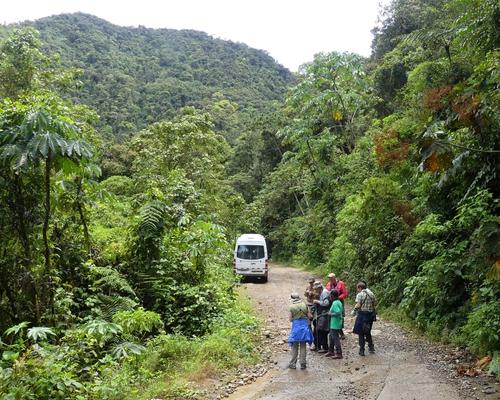 FEBUARY
FEBUARY
 MARCH
MARCH
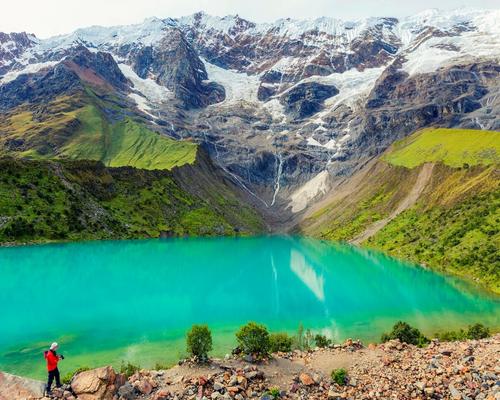 APRIL
APRIL
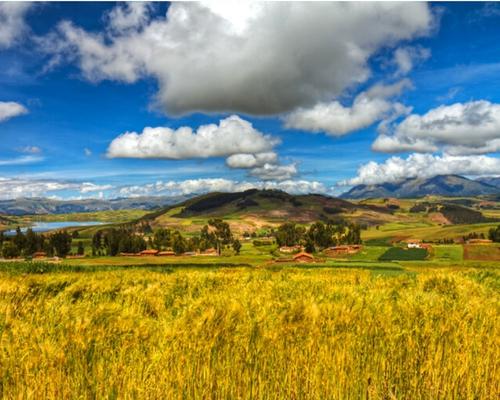 MAY
MAY
 JUNE
JUNE
 JULY
JULY
 AUGUST
AUGUST
 SEPTEMBER
SEPTEMBER
 OCTOBER
OCTOBER
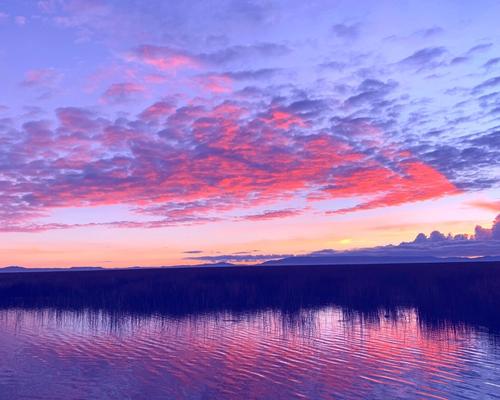 NOVEMBER
NOVEMBER
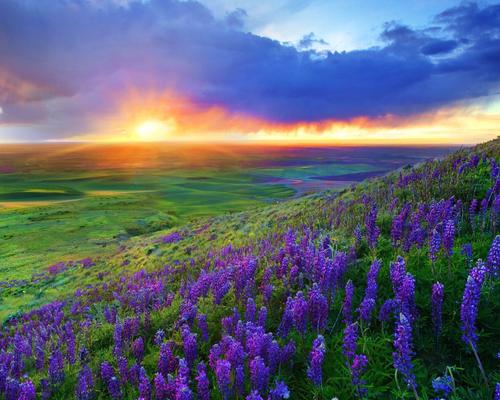 DECEMBER
DECEMBER
To book this tour, a minimum of $ 200 USD per person is required, the remaining balance will be paid upon arrival in Peru, at the Cusco office.
Any other additional information, please coordinate with your travel agent.

Nothing gets you closer to a country than walking through it, and we’ve got trips to suit walkers of all levels and interests.

All our Walking trips are graded from ‘Easy’ through to ‘Challenging to Tough’. On our online trip itineraries you’ll find a chart showing the daily walk distances, timings and information on the route including the terrain, altitude. Generally, no specific training is needed but you might feel more comfortable if you’ve got out walking a few times in the lead-up to your trip.
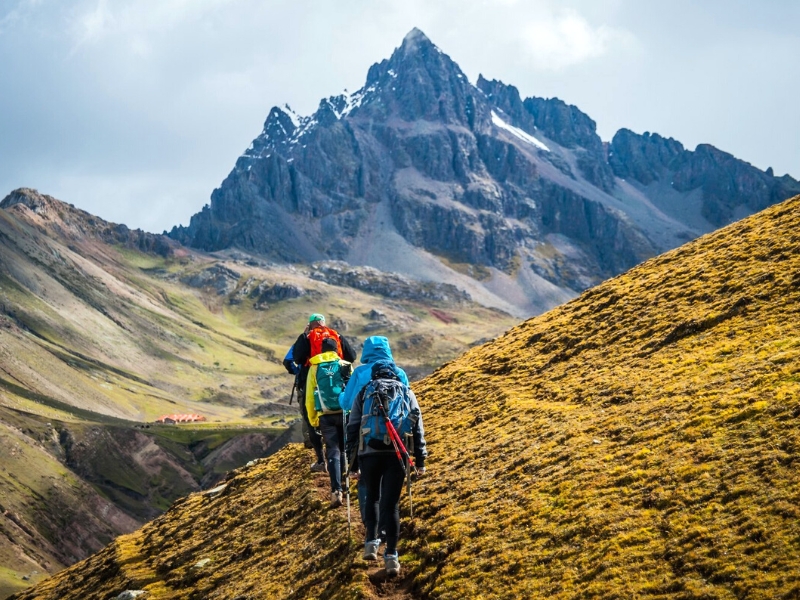
As with all our trips, every group is different but the ‘average’ group consists of roughly half couples and half solo travellers – all sharing a passion for exploring the world on foot. You’ll always have someone to keep you company along the route, but you don’t always have to walk together. Wherever possible your Andean Great Treks leader will allow everyone to walk at their own pace, regrouping regularly along the route.

Mostly of our hikes in the mountains in Peru and Cusco like the classic Inca Trail to Machu Picchu, Ausangate Trek, Lares Trek, Ancascocha Trek, Salkantay Trek , involves an average of walking hours of 7-8 hours per day, this timing includes stops for taking photos, lunch, breaks for recovery the energy, and the most important we adapt to your walking pace. This relaxed style of trip involves to know all the attractions in greater depth.

On nearly all our Walking trips, porters or mules will carry all the camping equimpent, so your main luggage will be transported for you. We recommend walk with a light rucksack, you will carry water, snacks, a camera, a small first aid kit and any extra clothing or sun protection. On more remote or challenging treks, additional guides are there to assist the leader tour guide and provide support to the group.
The acclimatization period is very important for our travelers to enjoy the experience. We suggest a minimum of 3 or 4 days of the previous stay in Cusco city, the Sacred Valley of the Incas or Machu Picchu. We recommend you check the acclimation programs we have prepared for you on our website.
The average height of our camps in the trekking circuits is 3,500 masl. In fact, one of the circuits where you sleep at the highest altitude is the Ausangate Trek, where you will have days to set up the tents at a height of 4,300 meters. Remember that Peru has snowy peaks that reach up to 6,700 masl.
From 3,000 meters above sea level, the symptoms of “altitude sickness” vary according to each person, and may even not occur. However, among the most common are a headache, dizziness, nausea, loss of appetite and insomnia. Therefore, upon arriving in the city of Cusco, located at 3,400 meters above sea level, we recommend our travelers to take a good rest, drink plenty of water, eat light meals and take slower walking. Also, it is necessary to avoid alcoholic beverages and cigarettes. The symptoms can be alleviated with high mountain medicines such as DIAMOX or similar products, but we suggest you consult with your doctor before the trip.
While on the trail, hikers will need to carry a daypack (camera equipment, water bottle, extra layers, rain gear, and other accessories you might need on the trail.) Horses and llamas will carry your duffle bag to the next camping site.
The company makes the greatest efforts to provide a safe and unforgettable experience, for this reason, the trekking guides are constantly communicated with the central office through satellite phones, ensuring the welfare of each passenger. Our guides are trained in rescue techniques and first aid in emergency outdoor, these courses are developed annually and have the standards of the wilderness first respond. At all times we have oxygen and first aid equipment. In case of any eventuality a medical director will answer our questions 24 hours a day. In addition to the animals who carry the luggage we have horses to help walkers tired or eager to ride. We recommend getting a travel insurance.
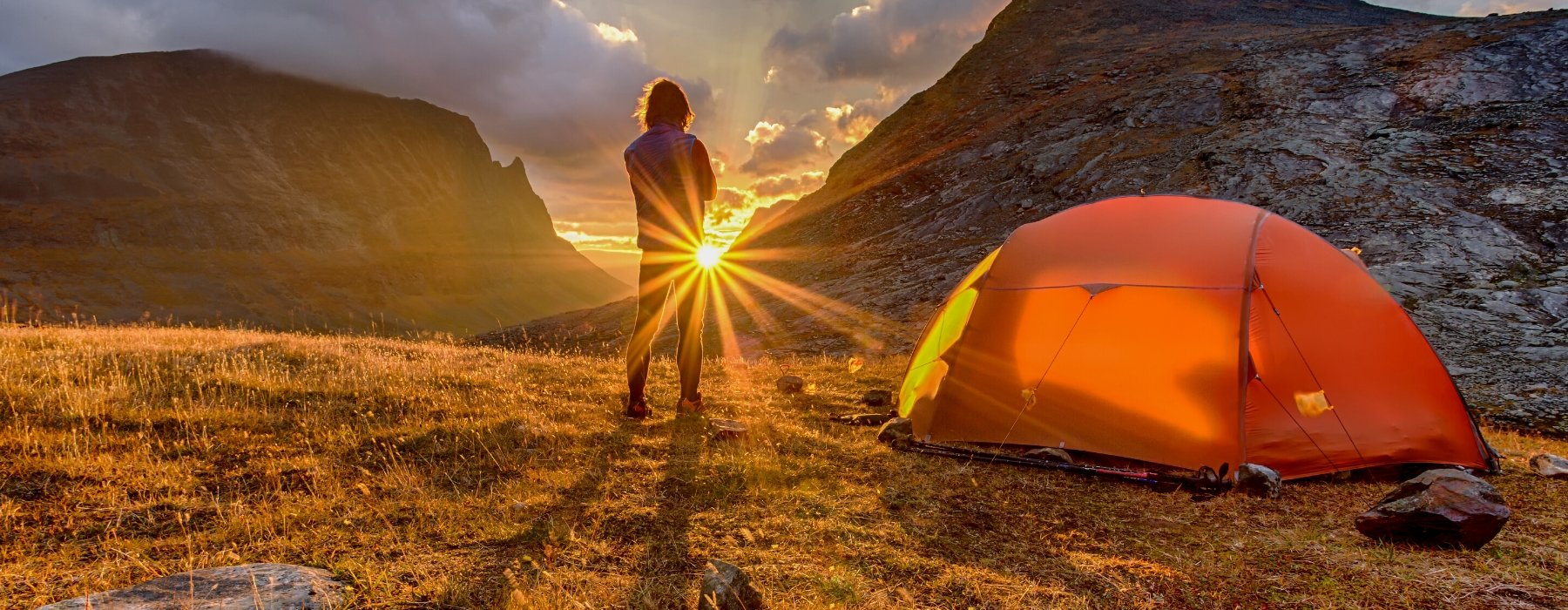
Every Andean Great Treks holiday has been thoughtfully planned and crafted by our specialists. They draw on their own extensive travel experience and the guidance and expertise of our local partners to create superb holidays. Our specialists are committed to making every aspect smooth and enjoyable; they genuinely want to ensure that the holidays they create leave you with wonderful lasting memories.
Every Andean Great Treks traveller is accompanied by an experienced tour guide, you will be immersed in Historic cities, ancient ruins and unfamiliar landscapes are all brought to life by our carefully selected local guides. They want to share their expertise and help you make your own discoveries too; their sole mission is to ensure you enjoy every moment.
Giving you the freedom to make your holiday even more memorable. We know how much our customers look forward to their holiday and we pride ourselves on the choice and flexibility that we offer to enhance every aspect of your experience. Whether it’s getting to the airport, upgrading your room or booking an additional excursion, we can help.

Our guides are the stars of the show; it is their unrivalled knowledge, passion and expertise that will transform your tour experience from good to truly extraordinary!
Because the have grown up in the area and know it like the back of their hand, so they can help you experience whichever aspects most interest you. They’re passionate about sharing their corner of the world with you, and as you explore together, they’ll open your eyes to the intricate details, provide background to enhance your understanding of what you’re seeing, and share stories that will bring everything to life.

“Your inspiration for a trip can be a single word or a highly evolved outline, but it’s the conversations we have that help us understand the experience you’re looking for. Meanwhile, I’m looking back on the time I spent at the destination.
‘The great thing about working with a specialist at Andean Great Treks is how they take your complete jumble of ideas and turn them into something absolutely spectacular.’
As you begin to share your ideas with your specialist, it will connect them immediately back to a time in their own travels. Conjuring a picture of the rest time they made that same discovery, reminding them how it felt.
Your specialist understands that, when the journey is right, it has the power to excite your emotions in the most profound ways after all, that was the effect on them.
They carry a treasure box of moments, captured over many journeys, into every suggestion they’ll share with you, as they ask you how you want to feel on your trip.

EXPERIENCES THAT CALL TO YOU
It’s what you do in a destination that helps bring it to life. It’s why we strive to choose experiences that help you connect to a place, absorbing a little of its complex character. Wherever your passions lie, we’ll recommend experiences that speak to you, and we’ll recommend the guide or local expert who’s most qualified to help you explore. Packing your holiday full of special experiences means some early starts and long days, but you can be sure that you’ll return home with many incredible memories! Read our Tours and check the Physical Ratings to see if the pace and activity levels are right for you.
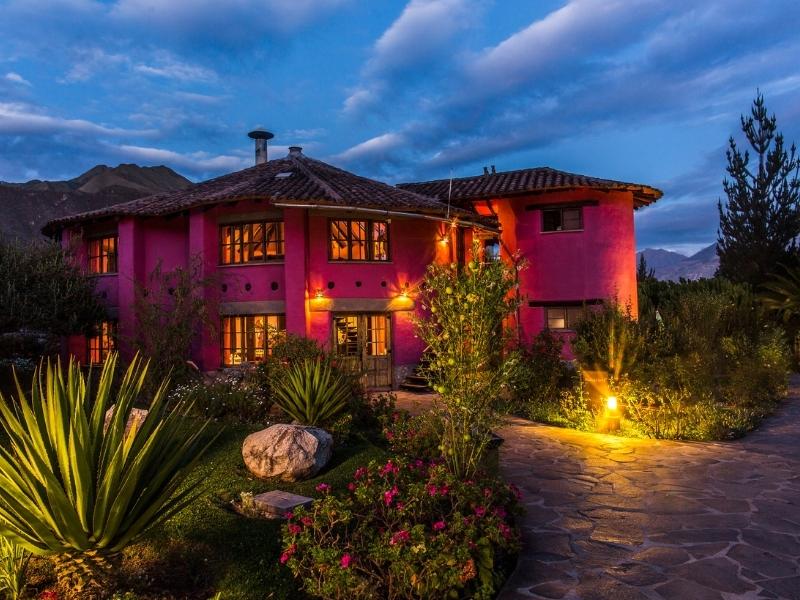
STAYS WITH DIFFERENCE
We know that where you stay is a cherished part of your travels. So, we go to great lengths to find places to stay that exceed expectations, or go above and beyond the ordinary, whether in their character, hospitality, or location. Over the years, we’ve discovered the very best properties, trying and testing them, so we can choose the right one for you. We’ve nourished long-standing relationships with these establishments and the people who founded them, and we’ve stayed there many times often, we’ll even know which rooms have the best views (and reserve them for you).
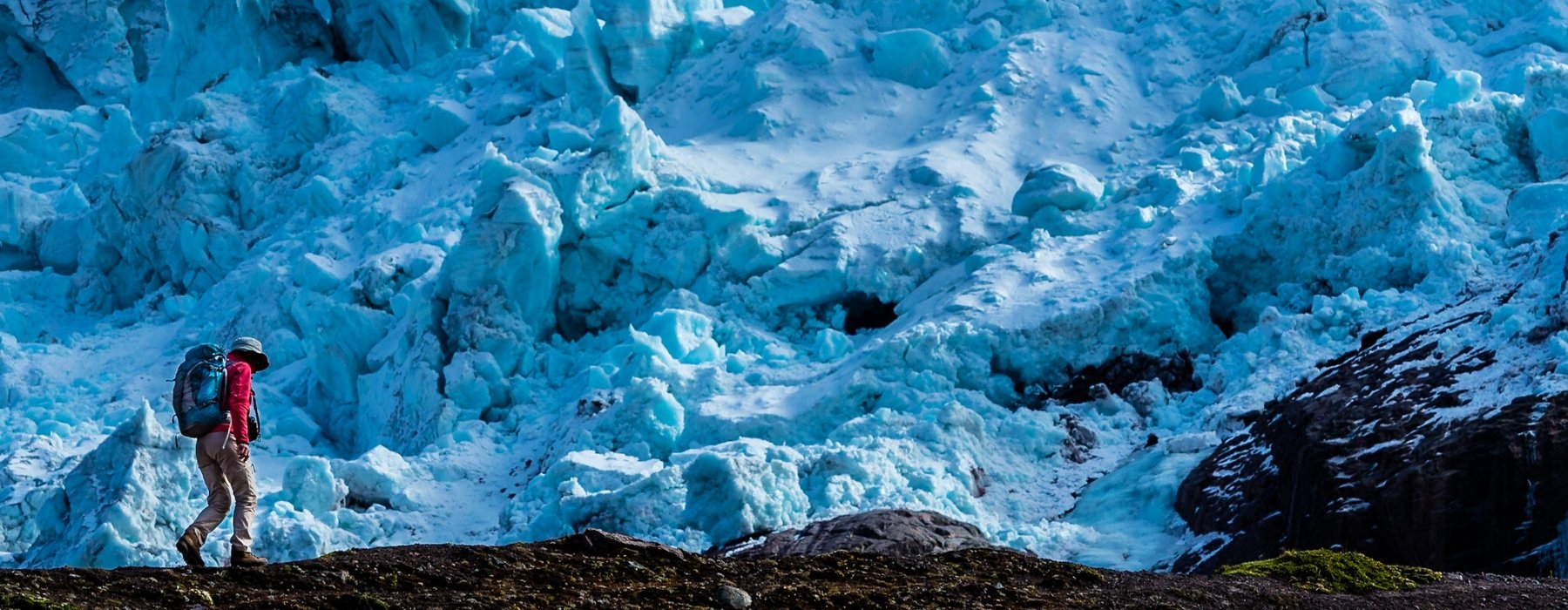
Our style of travel — authentic, thoughtful, and focused on building meaningful connections to the people and places you visit — is inherently respectful and considerate of the destinations we love. We design each aspect of your trip exactly as you want it, which includes its sustainability. That might mean choosing a train journey instead of a flight, staying at eco-friendly wildlife lodges, or opting for experiences that give back to the communities you’re visiting. The choice is yours.
Responsible travel has always been at the heart of what we do. First and foremost, because it gives you the best experience, but, also because it helps to preserve the communities and landscapes you visit. This isn’t new for us we collaborated with local communities and outside experts so we can grow to be better ambassadors.
The most authentic and interesting experiences often directly benefit the local people. We prefer to buy local products that are produced in the organic farms of the Sacred Valley, we also have alliances with local artisan organizations who provide us with souvenir items for our clients, your money directly benefits the local economy.
Our style of travel — authentic, thoughtful, and focused on building meaningful connections to the people and places you visit — is inherently respectful and considerate of the destinations we love. We design each aspect of your trip exactly as you want it, which includes its sustainability. That might mean choosing a train journey instead of a flight, staying at eco-friendly wildlife lodges, or opting for experiences that give back to the communities you’re visiting. The choice is yours.
Responsible travel has always been at the heart of what we do. First and foremost, because it gives you the best experience, but, also because it helps to preserve the communities and landscapes you visit. This isn’t new for us we collaborated with local communities and outside experts so we can grow to be better ambassadors.
The most authentic and interesting experiences often directly benefit the local people. We prefer to buy local products that are produced in the organic farms of the Sacred Valley, we also have alliances with local artisan organizations who provide us with souvenir items for our clients, your money directly benefits the local economy.
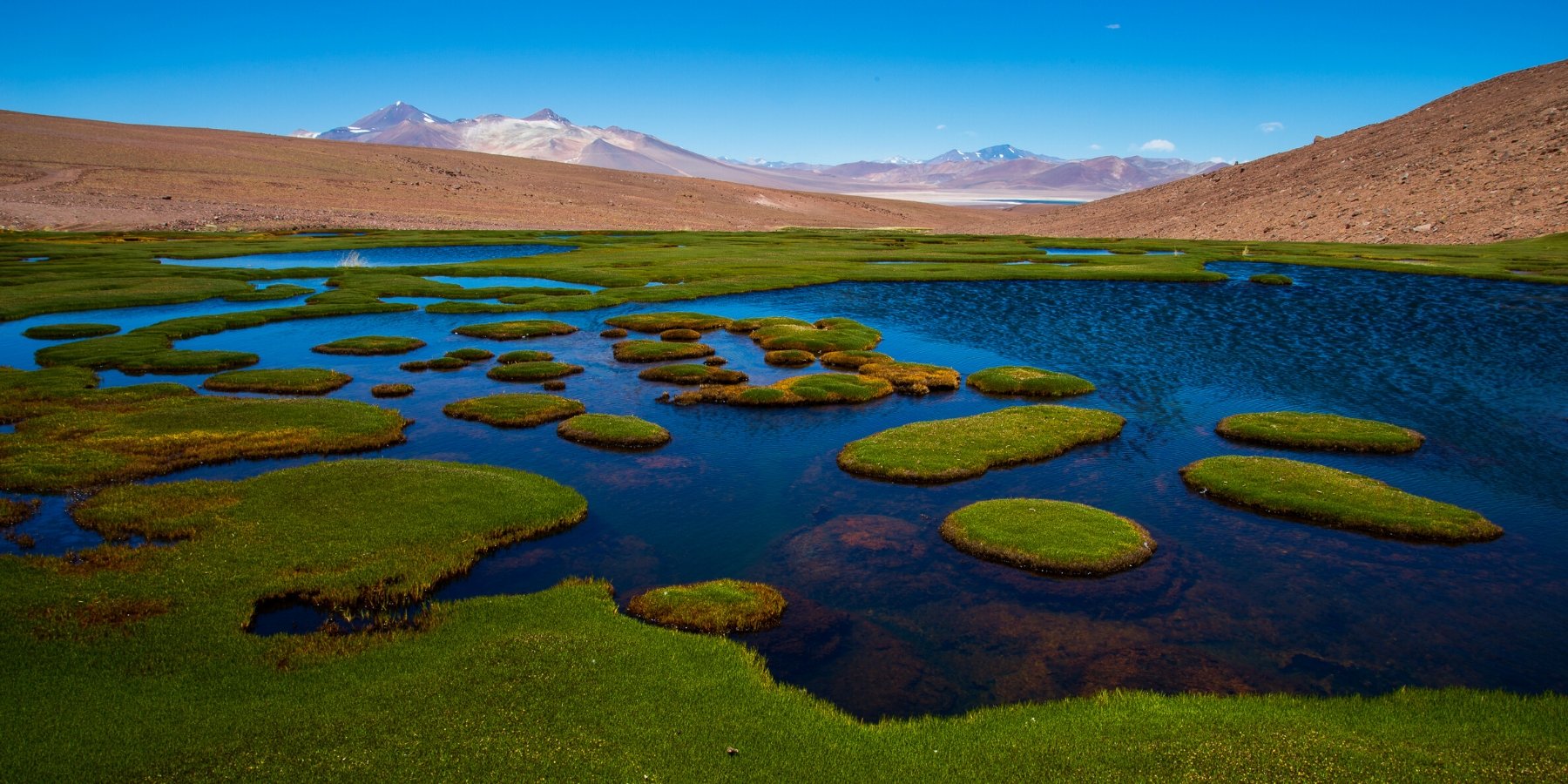
‘There’s a saying: we don’t inherit the Earth from our ancestors, we borrow it from our children. When we show you our country, this philosophy guides everything we do. It’s our responsibility to preserve the environment and wildlife, and support communities. That means using slower modes of transport, like cycling, employing local people, and working with communities who’ll benefit directly from your visit. This also gives you the best, most authentic impression of the places we want to share with you.
We prefer to buy local products in ecological bags, to avoid the use of plastic bags, likewise we teach the use of soaps and ecological products in each tour that we organize. We also work on reforestation projects with local communities who take care of landscape resources such as communal reserves, national parks.
‘There’s a saying: we don’t inherit the Earth from our ancestors, we borrow it from our children. When we show you our country, this philosophy guides everything we do. It’s our responsibility to preserve the environment and wildlife, and support communities. That means using slower modes of transport, like cycling, employing local people, and working with communities who’ll benefit directly from your visit. This also gives you the best, most authentic impression of the places we want to share with you.
We prefer to buy local products in ecological bags, to avoid the use of plastic bags, likewise we teach the use of soaps and ecological products in each tour that we organize. We also work on reforestation projects with local communities who take care of landscape resources such as communal reserves, national parks.

Ancascocha Trek & Classic Inca Trail to Machu Picchu will take you through beautiful landscapes and snowy mountains surrounded by colorful lakes and waterfalls. You will discover ancient inca ruins, local flora and fauna of Machu Picchu.
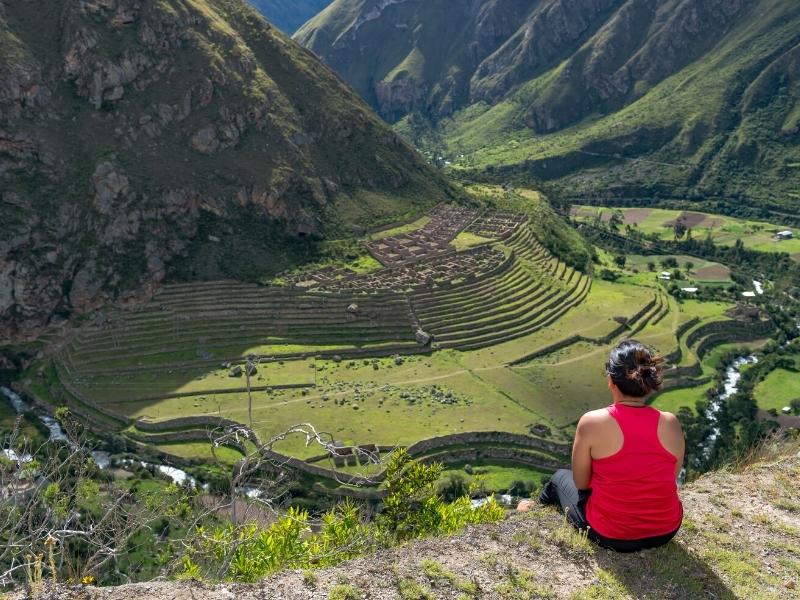
The Ancascocha Trail to Machu Picchu in the Peruvian Andes is a remarkable trail that remains off the beaten path. It is listed as one of National Geographic’s 20 dream hikes on their World Best Hikes list.

This trek will take you through remote villages, intact Inca ruins, while offering fantastic views of the Sacred Valley and the snowy mountains of Peru, and a less traveled route. You will explore a true Incas Sun Gate and the citadel of Machu Picchu.